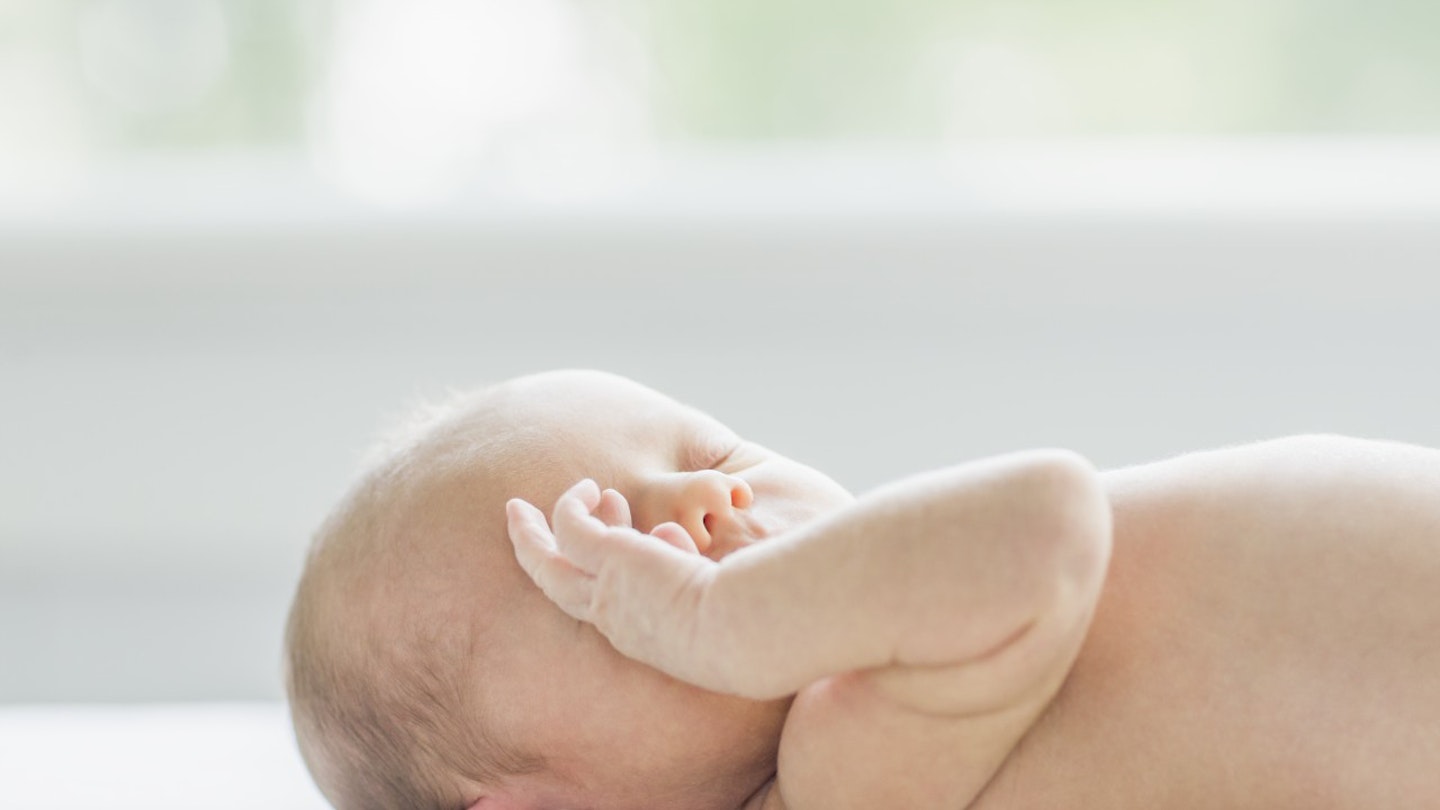It’s never nice to see your baby’s eyes all leaky and gunky from an infection, but they’ll soon be back to their usual beautiful best
A crusty, red or gunky eye usually only means one thing – an eye infection. But before those alarm bells start, know that eye infections in babies are really common and just as easy to treat.
They can be caused by allergies, infections – irritation, all of which are easy for your baby’s GP to identify and cure.
What eye infections can a baby get?
A blocked tear duct – or sticky eyes, as you may know it – is the most common infection. It’s simply a delay in development and affects about a fifth of newborns.
Various strands of conjunctivitis (pink eye) can develop in babies, including a more severe version called neonatal conjunctivitis that can be contracted by babies under 28 days old.
‘This tends to develop if the mum had a sexually transmitted infection (STI) such as chlamydia or gonorrhoea while she was pregnant,’ says Professor Mitch Blair from the Royal College of Paediatrics and Child Health. ‘These types of STIs don't necessarily cause obvious symptoms so many mothers are unaware they are even infected.’
What are the symptoms?
Prepare yourself – if your baby has sticky eye, it may look like she is endlessly crying.
Her drainage system is disrupted and so her tears have nowhere to drain
But it’s just because her drainage system is disrupted and so her tears have nowhere to drain, hence the watery eyes.
Look out for a crusting on your baby’s eyelashes, which tends to appear when your little sleepyhead wakes. You may also notice pink/redness around the eyes and a greenish-yellow mucus.
How are eye infections treated?
Even if your baby’s eye infection is severe, she probably won’t be prescribed antibiotics so young.
‘Alternatively eye drops, could be prescribed,’ Professor Blair explains. Chances are your baby won’t like this at all (you’ll probably need an extra pair of hands to stop her squirming) and you’ll need to administer the drops approximately twice a day for seven days – but your GP will confirm the correct dosage.
A blocked tear duct clears up on its own within the first few weeks or months of your baby’s life. If it hasn’t sorted itself by the time she reaches her first birthday, which is rare, then let her GP know and a small surgical procedure may be suggested.
Do make sure that whatever eye infection your baby has you get seen by your GP and treated, to avoid permanent damage to her eyes.
‘If caused by chlamydia, around one-in-five babies may develop pneumonia,’ says Professor Blair. ‘If this is the case, your baby will need to go to hospital to receive the best care possible until she has recovered.’
Just like adult conjunctivitis, infant conjunctivitis is really contagious so it’s best to keep your baby away from all other children and babies until the infection has cleared up – you don’t want the hassle of other mums getting cross at you for infecting their little one!
